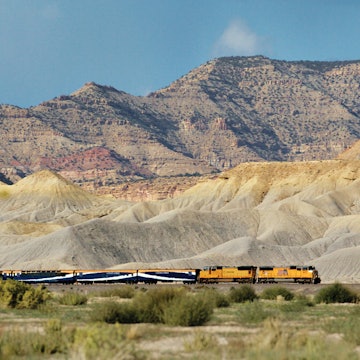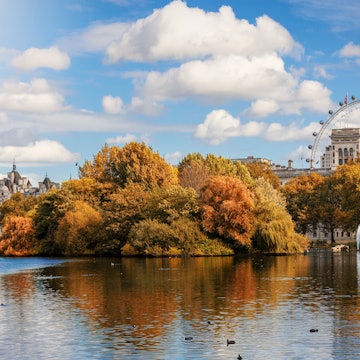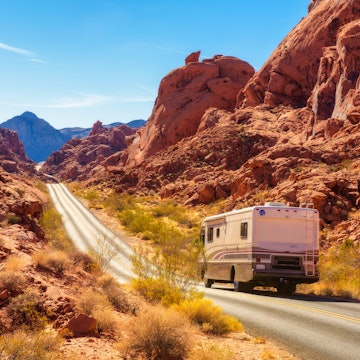
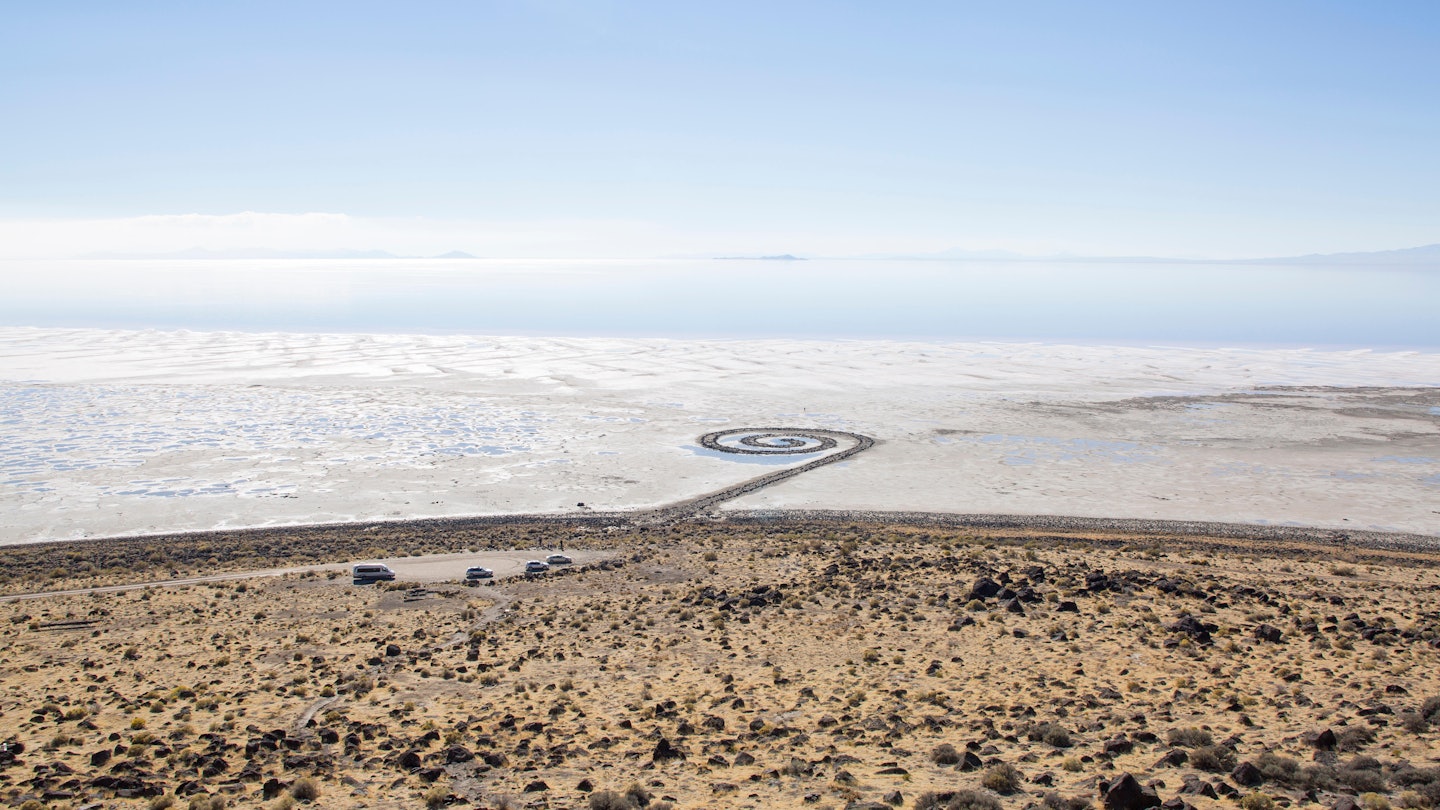
TTRHT1 Aerial view of Spiral Jetty against blue sky during sunny day
It's no wonder that Salt Lake City has exploded in popularity in recent years – it's nearly as synonymous with outdoor recreation as it is with the Mormon faith. With its close proximity to the unique sodium chloride formations to the east, the Wasatch Mountains to the west, and countless hiking, biking, skiing, and even spelunking opportunities within two hours drive, it's no wonder the SLC metro is growing.
From herds of wild bison to sprawling sculptures that fit right into Utah's epic landscapes to family-friendly old west history to ski towns that offer thrills and frills, there's a little something for everyone. And the best part of all is that you can fit each of those adventures into a quick there-and-back-again if you're short on time. We narrowed it down to the top ten day trips from Salt Lake City.

1. Antelope Island State Park
The Great Salt Lake is the largest body of water west of the Great Lakes, but it's hard to say just exactly how big it is, as its size fluctuates. The best place to experience the lake (and see the birds) is at Antelope Island State Park. White-sand beaches, birds and buffalo attract people to the pretty, 15-mile-long park.
The largest island in the sprawling lake is home to a 600-strong herd of American bison, or buffalo. The fall roundup, for veterinary exams, is a thrilling spectacle. Also making their year-round home here are burrowing owls and raptors, as well as namesake antelope, bighorn sheep and deer.
Nineteen miles of hiking trails provide many opportunities to view wildlife; however, some trails close during mating and birthing seasons. In addition to an 8-mile driving loop, there's a white, sandy beach to the south on Bridger Bay with basic facilities and showers.
Getting to Antelope Island State Park: Antelope Island is just an hour from Salt Lake City on I-15 North and UT-108 North across Farmington Bay.

2. Bonneville Salt Flats
Millennia ago, ancient Lake Bonneville covered northern Utah and beyond. Today, all that remains is the Great Salt Lake and 47 sq miles of shimmering white salt. The Bonneville Salt Flats are now public lands managed by the BLM, and are best known for racing. The flat, hard salt makes speeds possible here that aren't possible anywhere else. That said, remember that salt is insanely corrosive. If you drive on the flats, wash your car – especially the undercarriage – afterward. If you're traveling west, there's a rest stop where you can walk on the sand (and wash off your shoes in the bathroom). The nearest town is Wendover, on the Utah–Nevada state line.
Getting to: The Flats are about 100 miles west of Salt Lake City on I-80. Take exit 4, Bonneville Speedway, and follow the paved road to the viewing area parking lot (no services). From here you can drive on the hard-packed salt during late summer and fall (it's too wet otherwise). Obey posted signs: parts of the flats are thin and can trap vehicles.

3. Brigham City
On May 10, 1869, the westward Union Pacific Railroad and eastward Central Pacific Railroad met at Promontory Summit. With the completion of the transcontinental railroad, the face of the American West changed forever. Golden Spike National Historic Site, 32 miles northwest of Brigham City on Hwy 83, has an interesting museum and films, auto tours and several interpretive trails. Steam-engine demonstrations take place May through mid-October. Aside from Golden Spike National Historic Site, few people visit Utah's desolate northwest corner.
At the end of a dirt road (4WD recommended but not required) 15 miles southwest of the Golden Spike visitor center, there's a wonderfully unique outdoor art installation, the Spiral Jetty. It's a 1500ft coil of rock and earth spinning out into the water, and a groundbreaking example of site-specific sculpture. It's a little hard to find – get directions from Box Elder County Tourism or the nearby Golden Spike Visitor Center.
Whatever you get into, be sure to unwind afterwards at Crystal Hot Springs. 10 miles north of Brigham City in Honeyville, adults float in different-temperature soaking pools while kids zip down the water slides (open shorter hours than the pools November through February).
Getting to Brigham City: Brigham City is essentially a straight shot north from Salt Lake via the I-15.

4. Logan
With university charm and pretty rural surroundings, Logan is a quintessential old-fashioned community with strong Mormon roots. It's situated 80 miles north of Salt Lake City in bucolic Cache Valley, which offers year-round outdoor activities. Logan Canyon offers hiking and biking galore. It's beautiful year-round, but July wildflowers and October foliage are particularly brilliant.
Pick up a free interpretive trail guide at the Cache Valley Visitor Bureau in Logan before you head off on the 40-mile riverside drive through Logan Canyon Scenic Byway. Wind your way up through the Bear River Mountains, past Beaver Mountain, before descending to the 20-mile-long Bear Lake, a summer water-sports playground. Along the way there are numerous signposted hiking and biking trails and campgrounds, which are all part of the Uinta-Wasatch-Cache National Forest. Note that parts of the route may be closed due to snow December through May and campgrounds may not open until late June. Check conditions with the Logan Ranger District Office.
Getting to Logan: Logan is just an hour and fifteen minutes from Salt Lake. You essentially take the I-15 N to Brigham City and then transfer to US-91 N to peel slightly northeast to Logan.

5. Herber City and Midway
Twenty miles south of Park City, Heber City (population 15,792) and its vast valley make an alternative base for exploring the surrounding mountains. A popular steam-powered railway runs from here. A scant 3 miles east, Midway (population 5093) is modeled after an alpine town, with hand-painted buildings set against the slopes. Here you'll find activity-laden resorts – great for families – and a thermal crater you can swim in. Resort activities are open to all, and cross-country skiing is available close to both towns. Many of the forested mountains east of the towns have hiking, biking, cross-country skiing, ATV and snowmobile trails that are part of the Uinta-Wasatch-Cache National Forest.
Getting to Herber City and Midway: Herber City is 43 minutes from Salt Lake via I-80 E and US-189/US-40 East, just on the other side of Wasatch peaks like Park City and Bald Mountain.

6. Ogden
During Ogden's heyday, historic 25th St was lined with brothels and raucous saloons; today the restored buildings house restaurants, galleries, bakeries and bars. The old town is atmospheric, but the main attraction here is 20 miles east in the Wasatch Mountains of Ogden Valley. Since skiing here is more than an hour's drive from Salt Lake City, most metro-area residents head to Park City or the SLC resorts, leaving Snowbasin and Powder Mountain luxuriously empty. The villages of Huntsville and Eden, halfway between town and mountains, are nearest to the resorts.
Getting to Ogden: Only 36 minutes north of Salt Lake, Ogden is right on I-15 North. Once you see Thurston Peak on your right, you don't have too far to go.

7. Park City
With a dusting of snow, the century-old buildings on main street create a snow-globe scene come to life. A one-time silver boom-and-bust town, pretty Park City is now lined with condos and mansions in the valleys. Utah's premier ski village boasts fabulous restaurants and cultural offerings. It recently annexed the adjacent Canyons Resort to become the largest ski resort in North America.
Park City first shot to international fame when it hosted the downhill, jumping and sledding events at the 2002 Winter Olympics. Today it's the permanent home base for the US Ski Team. There's usually snow through mid-April.
Come summer, more residents than visitors gear up for hiking and mountain biking among the nearby peaks. June to August, temperatures average in the 70s F° ( 20s C°); nights are chilly. Spring and fall can be wet and boring; resort services, limited in summer compared with winter, shut down entirely between seasons.
Getting to Park City: Park City is about 40 minutes from downtown Salt Lake via I-80 East. If you don't want to drive or don't have a car, there are privately run shuttle companies that go back and forth between SLC and Park City, too.

8. Timpanogos Cave National Monument
Deep underneath the bulk of Mount Timpanogos, a series of limestone chambers have slowly grown as a result of the active Wasatch Fault that runs through northern Utah and southern Idaho. Three beautiful caves are connected by man-made tunnels blasted by the Civilian Conservation Corps almost a century ago after they were initially discovered by European settlers in the late 19th century. Hansen Cave, Middle Cave, and Timpanogos Cave are all protected as Timpanogos Cave National Monument and are accessible on ranger-led tours. Be prepared for a hike, however, as you'll need to climb up a tough 1092ft of elevation gain over just a mile and a half to reach the entrance.
Getting to Timpanogos Cave National Monument: Depart Salt Lake City on I-15 S until you are just north of Lehi, at which point you junction onto UT-92 E. The whole drive will take about forty minutes.

9. Provo
The third-largest city in Utah, Provo is the hometown of saccharine 1970s sibling singing sensation Donny and Marie Osmond. Just 45 miles south of Salt Lake City, this is a college town centered around Brigham Young University. University Ave, Provo's main thoroughfare, intersects Center St in the small old downtown core. The University's Museum of Art is one of the biggest in the Southwest, with a concentration on American art. Also worth a visit is the Covey Center for the Arts, a modern performance center with an auditorium, experimental theater space, art galleries and dance studios. Check the website for events.
Steel horse cowboys won't want to miss the Legends Motorcycle Museum with more than 200 vintage bikes on display, including the exceedingly rare 1907 Harley-Davidson Strap Tank (one of only three such motorcycles in existence). Also worth visiting is the adjacent Strap Tank Brewery, which makes its own craft beer and surprisingly good pub grub. Springville is 12 miles south of Provo. Note that the whole place pretty much shuts down on Sunday.
Getting to Provo: I-15 S will get you to Provo in under an hour.
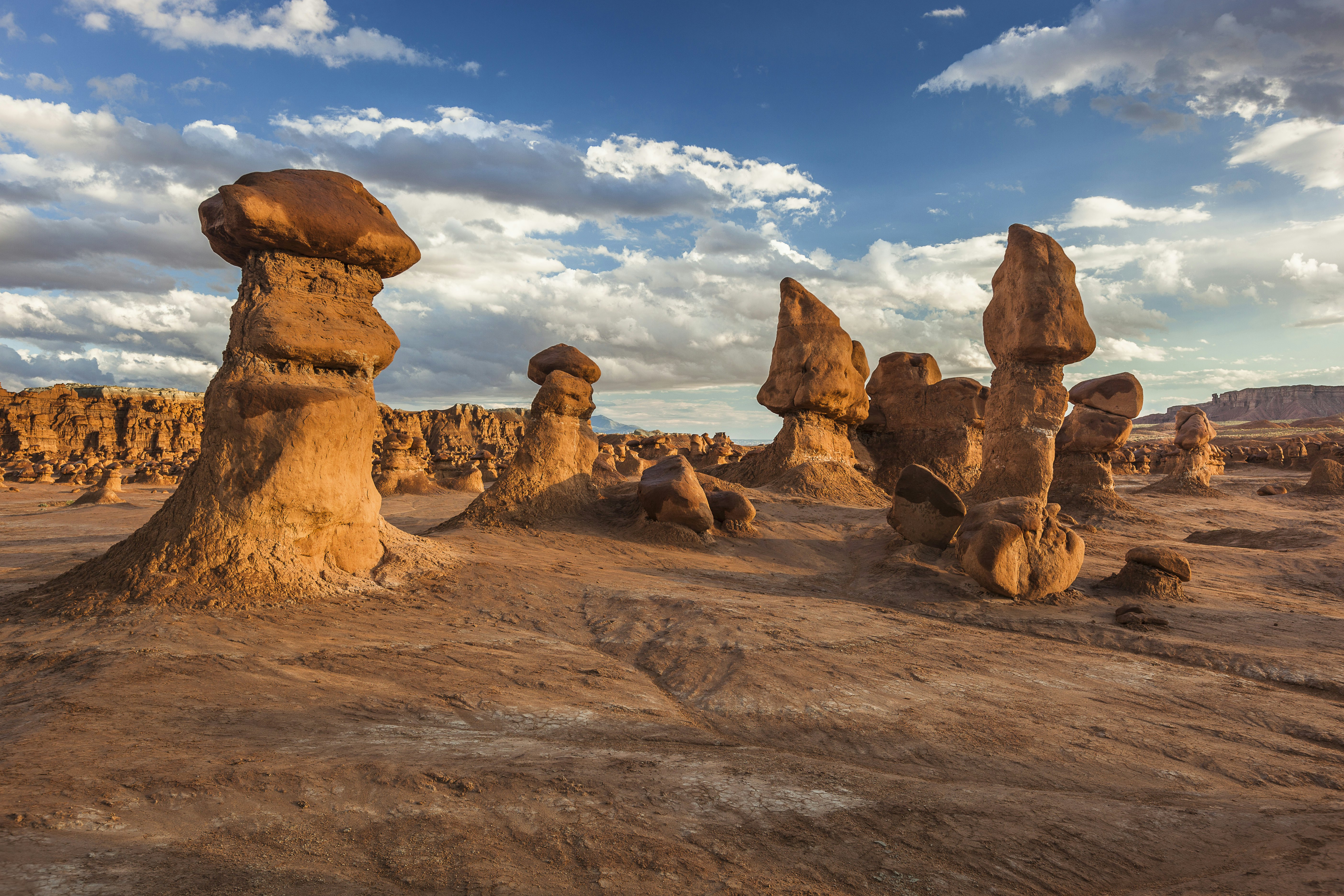
10. Goblin Valley State Park
No matter what you think the stadium-like valley of stunted hoodoos resembles, one thing’s for sure – the 3654-acre Goblin Valley State Park is just plain fun. A few trails lead from the overlooks down to the valley floor. You can climb down, around and even over the evocative ‘goblins’ (2ft to 20ft–tall formations). Kids and photographers especially love it. The park's 19-site campground books up on most weekends. West of the park off Goblin Valley Rd is BLM land, with good, free dispersed camping, but no services (stay on designated roads). North of the park entrance, an unpaved dirt road heads west to the Little Wild Horse and Bell Canyon loop trail, a moderate 8-mile hike through a series of lovely, narrow slot canyons.
Getting to Goblin Valley State Park: Goblin Valley is admittedly a stretch for a day trip, at three and a half hours from Salt Lake City. But the stunning hoodoos are worth an early start and a late return, with an easy drive down I-15 S to Spanish Fork, where you'll join US-6 E and UT-24 W to the park.











